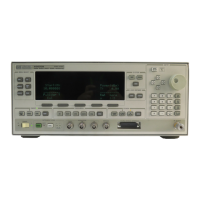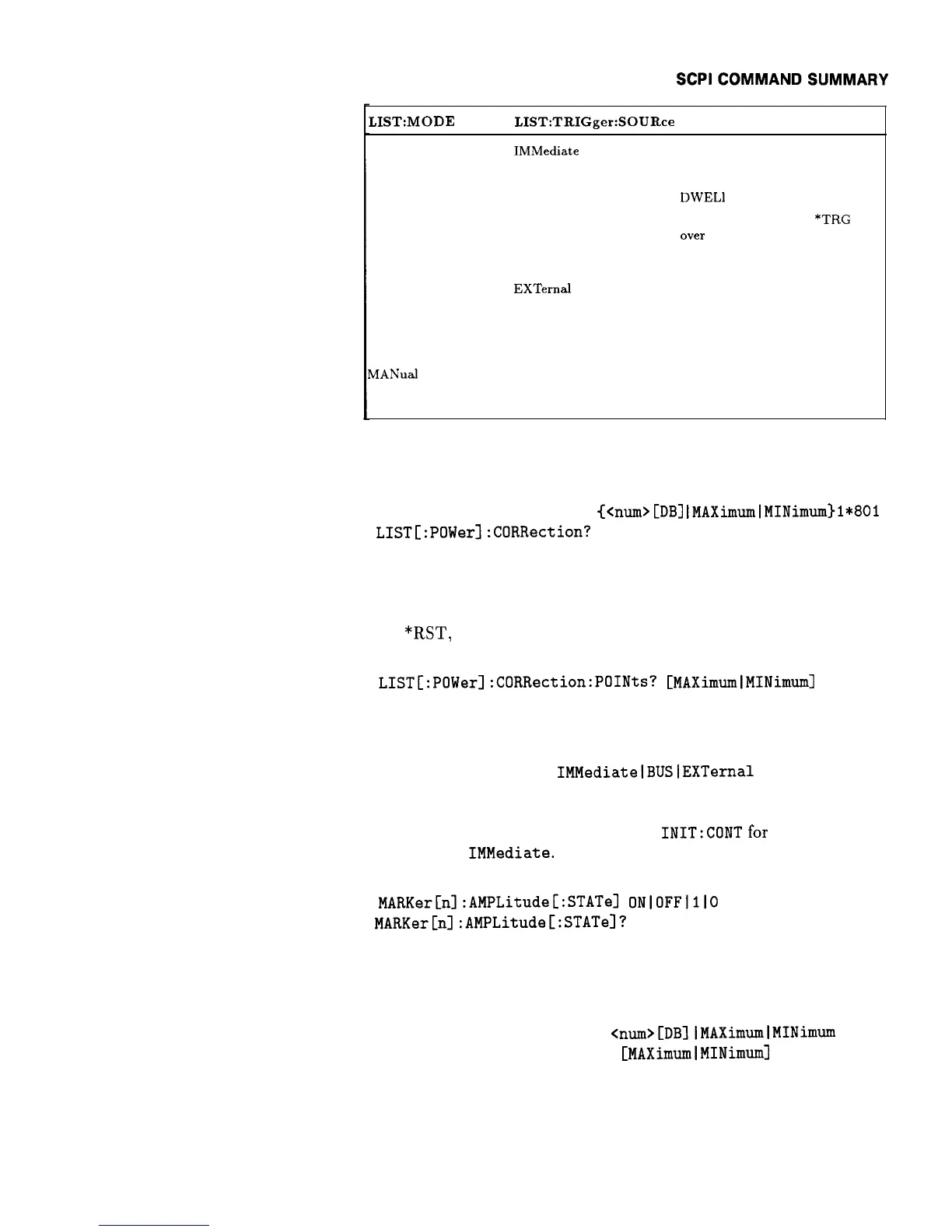LIST:MODE
AUTO
LIST:TRIGger:SOURce
How the list is played back.
IMMediate
Each new frequency point is
stepped to automatically,
after waiting the specified
DWELl
time.
AUTO
BUS
Wait for a <GET> or
*TRG
over
the HP-IB before
advancing to the next
frequency in the list.
AUTO
EXTernal
Wait for a signal to be
received on the external
input before advancing to
the next frequency in the
list.
MANual
Don’t care
Only the list point
specified by LIST:MANual
is played back.
*RST state is
AUTO.
l
LIST[:POWer]:CORRection
(<num>CDB]
lMAXimumlMINimum)l*801
l
LIST[:POWer]:CORRection?
Sets and queries the list of correction levels that correspond to each
of the frequencies entered using the LIST:FREQ command. The
attenuator is not allowed to change during the list execution. The
number of parameters can be from
1 to 801.
After
*RST,
the value is 0.
l
LIST[:POWer]:CORRection:POINts?
[MAXimumlMINimum]
Returns the number of correction points that have been entered into
the list array. After *RST returns a 1.
l
LIST:TRIGger:SOURce
IMMediatelBUSIEXTernal
l
LIST:TRIGger:SOURce?
Sets and queries the list point-to-point trigger source when in the
automaticlistmode. See LIST:MODE and
1NIT:CONTfor
more details.
*RST state is
IMMediate.
l
MARKer[n]:AMPLitude[:STATe]
ONlOFFlllO
l
MARKer[n]:AMPLitude[:STATe]?
Sets and queries the amplitude marker on/off switch. While [n] may
be used, there is really only a single switch for all the markers.
*RST
value is OFF.
l
MARKer[n]:AMPLitude:VALue
<num>[DBllMAXimumlMINimum
l
MARKer[n]:AMPLitude:VALue?
[MAXimumlMINimum]
Sets and queries the value of the amplitude marker. While [n] may
Operating and Programming Reference S-39

